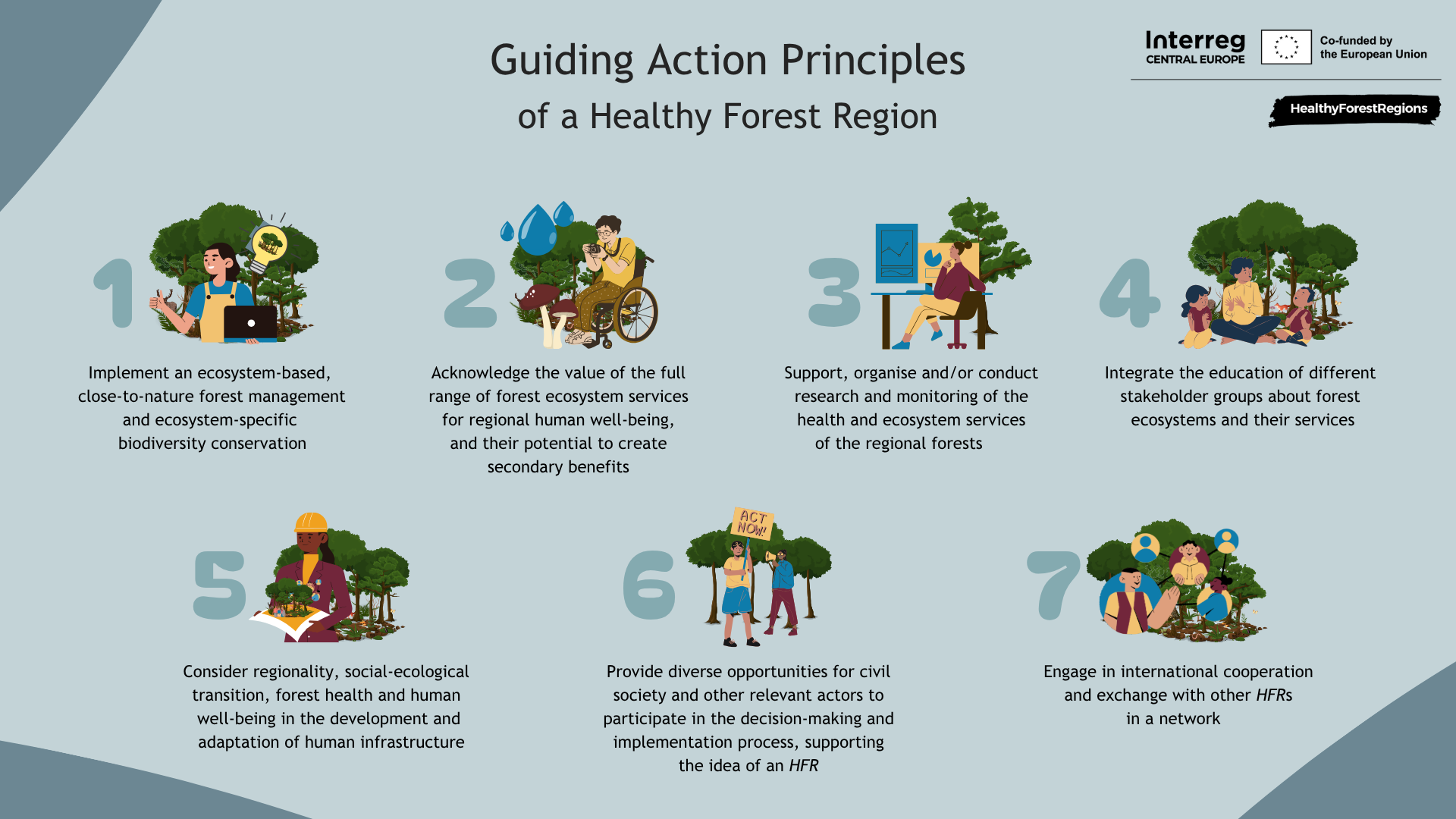In a series of four workshops — the so-called “cupcake workshops” — we worked to define what makes a region a Healthy Forest Region. Subject to further refinement, we reached the following conclusions. Following the HFR Guiding Action Principles, a Healthy Forest Region should:
Normal
0
21
false
false
false
DE
X-NONE
X-NONE
/* Style Definitions */
table.MsoNormalTable
{mso-style-name:”Normale Tabelle”;
mso-tstyle-rowband-size:0;
mso-tstyle-colband-size:0;
mso-style-noshow:yes;
mso-style-priority:99;
mso-style-parent:””;
mso-padding-alt:0cm 5.4pt 0cm 5.4pt;
mso-para-margin-top:0cm;
mso-para-margin-right:0cm;
mso-para-margin-bottom:8.0pt;
mso-para-margin-left:0cm;
line-height:107%;
mso-pagination:widow-orphan;
font-size:11.0pt;
font-family:”Calibri”,sans-serif;
mso-ascii-font-family:Calibri;
mso-ascii-theme-font:minor-latin;
mso-hansi-font-family:Calibri;
mso-hansi-theme-font:minor-latin;
mso-bidi-font-family:”Times New Roman”;
mso-bidi-theme-font:minor-bidi;
mso-fareast-language:EN-US;}
- Implement an ecosystem-based, close-to-nature forest management and ecosystem-specific biodiversity conservation.
- Acknowledge the value of the full range of forest ecosystem services for regional human well-being, and their potential to create secondary benefits.
- Support, organise and/or conduct research and monitoring of the health and ecosystem services of the regional forests
- Integrate the education of different stakeholder groups about forest ecosystems and their services.
- Consider regionality, social-ecological transition, forest health and human well-being in the development and adaptation of human infrastructure.
- Provide diverse opportunities for civil society and other relevant actors to participate in the decision-making and implementation process, supporting the idea of an HFR.
- Engage in international cooperation and exchange with other HFRs in a network.
